|
View as a webpage
|

Desert Poppy and Arizona Lupines blooming south of the Cottonwood Mountains, east of Indio, California
|
|
ISSUE 844 - March 14, 2019
|
|
|
- Track the Bloom
- Headlines and Highlights
- BLM and DOI Highlights
- Wildlife Question of the Week
- Upcoming Events
|
|
Upcoming travel plans? Please remember to check road conditions and closures. Travelers can also download the QuickMap app, quickmap.dot.ca.gov, or call 1-800-427-7623 for constantly updated highway information. (California Department of Transportation)
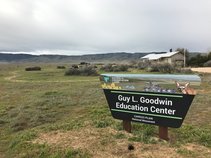
#TracktheBloom
This time of year there is a lot of #CAlove, especially with the much anticipated wildflowers. We will continue sharing updates from your public lands to help visitors know what to realistically expect when it comes to wildflower blooms. As you make plans to #RoadTripCalifornia, please remember the importance of Leave No Trace principles.
As of March 7, 2019, rain showers continue to make roads impassable in the Carrizo Plain National Monument. Please follow road warning signs to avoid getting vehicles stuck in the mud because of the wet conditions. The Carrizo Plain is higher elevation and further inland, so wildflower season is later than the coastal range. Don’t forget to check the visitor center wildflower info line (805) 475-2035.
Related: Leave No Trace Center for Outdoor Ethics
Related: Theodore Payne Wild Flower Hotline
Related: Desert USA Wildflower Report
|

Where and When to Catch the Desert Wildflower Super Bloom
It’s called a once-in-a-decade event, but Southern California and Arizona are experiencing the second so-called super bloom in three years. Super blooms usually happen when cold winters are followed by heavy spring rains. It’s impossible to predict with certainty when or even if they will happen, but it’s clear that the conditions aligned perfectly this year, as it’s so far shaping up to be the best super bloom in decades—and that’s saying something after the spectacular show the deserts put on in 2017. (Sunset)
Related: How to See California's Super Bloom (Conde Nast Traveler)
Related: The Super Bloom in Pictures (The New York Times)
Related: California Wildflowers, Where and When to Find Them During the Super Bloom (AFAR Magazine)
|

Magnolia Ranch Temporarily Closed During Wildland Fire Training
The Bureau of Land Management’s Mother Lode Field Office will temporarily close Magnolia Ranch from March 13-14, while the Wildland Fire Training Center conducts its wildland fire training with personnel. Magnolia Ranch is located approximately five miles north of the town of Coloma along State Route 49 and the South Fork of the American River. It is on BLM-managed public lands, situated between Cronan Ranch and Greenwood Creek River Access, which will remain open during the training. (BLM news release)
|

BLM Offers Property Owners Fuel Reduction Permits
Property owners who share boundaries with Bureau of Land Management public lands may now apply for permits to clear flammable vegetation from public lands adjacent to their private properties. The BLM Redding Field Office will issue free hazardous fuels reduction variance permits for public lands in Butte, Shasta, Siskiyou, Tehama and Trinity counties. (BLM news release)
|

Officer, Best Friend Patrol New Mexico Federal Lands
They live together, work together, play together. They’re side by side 24 hours, almost every day. Most of their time is spent wandering open desert, driving along dirt roads, sometimes working more than 16-hour shifts. In a lot of ways, it sounds like the makings of a buddy cop movie. But it’s all very real. For almost three years, Mike Carpenter, a law enforcement officer and K9 handler for the federal Bureau of Land Management, and his 4½-year-old black German shepherd, Enzo, have teamed up to sniff out — literally in Enzo’s case — narcotics and evidence of other crimes on federal land. (Santa Fe New Mexican)
|

A wildland #firejob might be for you!
Apply TODAY for BLM fire jobs on USAJOBS:
- Forestry Technician (Fire) in Placerville, CA
- Forestry Technician (Fire Engine Operator) in Essex, Onyx and Yucca Valley, CA
- Forestry Technician (Assistant Superintendent) in Susanville, CA
- Forestry Technician (Fire Engine Operator) in Susanville, Cedarville and Whitethorn, CA
- Forestry Technician (Fire) in Cedarville, Susanville and Whitethorn, CA
- Forestry Technician (Fire) in Cedarville, Susanville and Whitethorn, CA
|
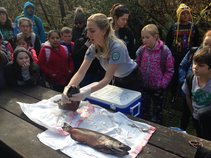
Students Study Salmon at Headwaters
AmeriCorps Watershed Stewards Program participants Kate Southall and Jessica Coming conducted an in-class watershed/salmon education presentation with 4th grade students followed by a field trip to the Headwaters Forest Reserve last week. They discussed the importance of water quality for salmon and tested the Elk River for healthy habitat. The beginning of the field trip included showing a dissected coho salmon and identifying the anatomy. The students will have a follow up activity in their classroom when they dissect their own fish. (BLM California Facebook)
|

National Wildlife Refuge System turns 116!
Things looked a lot different back in 1903, when President Theodore Roosevelt established the first national wildlife refuge on Pelican Island in Florida to protect wild birds. But today, the National Wildlife Refuge System, managed by U.S. Fish and Wildlife Service, is a premier network of public lands, with over 567 wildlife refuges and locations in each state and territory. They support thousands of iconic plants and animals, local communities and outdoor adventure. (DOI video)
|

Bernhardt Applauds Signing of Bipartisan Public Lands Bill
U.S. Department of the Interior Acting Secretary David Bernhardt applauded President Donald J. Trump for signing into law S.47, the John D. Dingell Jr. Conservation, Management, and Recreation Act (formerly known as the Natural Resources Management Act). The President signed the bill at an Oval Office signing ceremony surrounded by a bipartisan group of lawmakers. The bill was made up of more than 100 individual bills that were introduced by 50 Senators and several House members. The Interior Department had advocated for in concept or worked with Members of Congress on many of the individual provisions that made up the package. (DOI news release)
Related: Alabama Hills National Scenic Area becomes law (Sierrawave)
Related: Law signed expanding park, OHV land: Trump endorses bill from Yucca Valley congressman (Hi-Desert Star)
|

President Proposes $12.6 Billion for the Department of the Interior’s Fiscal Year 2020 Budget
President Donald J. Trump proposed a $12.6 billion Fiscal Year (FY) 2020 budget for the Department of the Interior that invests in programs supporting good-paying American jobs, common-sense regulatory reforms, expanding opportunities for our outdoor recreation economy, and increasing revenue to states, Tribes and local communities. The budget reflects the President’s commitment to striking the right balance of conservation and sustainable use of resources in a way that provides proper stewardship of our land and resources, conserves and makes accessible our public lands, enhances the safety of our communities, increases energy security and allows America to prosper. Importantly, the President’s proposed FY 2020 budget for the Department of the Interior also includes two significant legislative proposals: Active Forest Health Management and the Public Lands Infrastructure Fund. (DOI news release)
Related: Acting Secretary Bernhardt Applauds President Trump’s Budget Proposal (DOI news release)
|
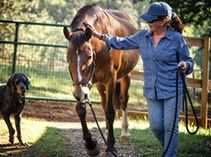
Bureau of Land Management Offers New Incentives to Encourage More Adoptions of Wild Horses and Burros
As part of the Bureau of Land Management’s effort to find good homes for wild horses and burros removed from public lands, the agency today began offering new financial incentives to encourage qualified people to adopt one or more of the animals. The program is part of the BLM’s efforts to confront a growing over-population of wild horses and burros on fragile rangelands and in off-range holding facilities, which cost taxpayers nearly $50 million every year to maintain. (BLM news release)
|
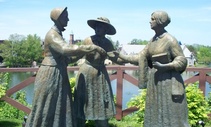
Trailblazing Women: National Historical Sites Honoring Women
The National Park Service preserves important cultural and historic sites across our nation. Many of these interesting places honor the contributions women made to the country and discuss the challenges they’ve faced on their march to equality. To celebrate Women’s History Month, start planning your trip today to explore a few of these sites. (DOI photo gallery)
|
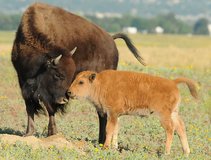
Multiple Choice
A bison calf is called a ____________.
a) bulldog
b) pink calf
c) red dog
d) mini buff
Keep scrolling to find out!
|
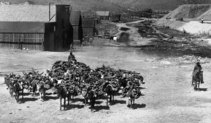
Now - December 2019: Fueling the Boom, Chinese Woodcutters in the Great Basin 1870-1920
The Nevada State Museum in Carson City is hosting a new exhibit featuring historical/ archaeological artifacts and photographs about Chinese woodcutting camps from Bodie Hills. The exhibit will highlight the significance of the woodcutting community near Chinese Camp (Aurora), shedding light on the little-known history of the Chinese woodcutters who lived there and felled pinyon pines to supply charcoal and firewood to the mining camps of Bodie and Aurora from 1875 to 1915. (Nevada State Museum website)
|
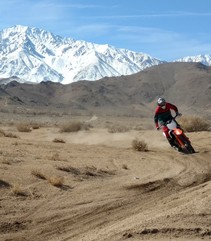
March 20: BLM Bishop Field Office and Forest Service Inyo National Forest OHV Grant Applications Now Available for Public Comment
The Bureau of Land Management Bishop Field Office and U.S. Forest Service Inyo National Forest have submitted to the California State Parks Off-Highway Motor Vehicle Recreation preliminary applications for grant funds to enhance and manage motorized recreation. The agencies also invite the public to come out to an informal open house happening from 5 to 7 p.m. on Wednesday, March 20, at the U.S. Forest Service/BLM office, located behind the Department of Motor Vehicles, at 351 Pacu Lane, Bishop. (BLM and USFS news release)
|
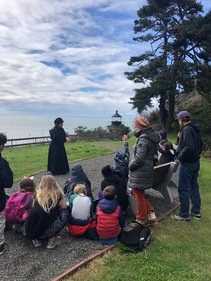
First Saturday of Every Month: Living History at Trinidad Head Lighthouse
BLM Park Ranger Julie Clark plays Josephine Harrington for Trinidad School students at Trinidad Head Lighthouse. Josephine lived with her husband, Captain Fred Harrington the lighthouse keeper, at the Trinidad Head Lighthouse for 28 years. Julie has been performing this living history piece to bring the past to life since the BLM acquired the lighthouse in 2014. Now part of the California Coastal National Monument, the Trinidad Head Lighthouse is open to the public the first Saturday of every month (year-round). Visitors can climb to the top of the lighthouse from 10 a.m. to 12 p.m. thanks to docents from the Trinidad Museum Society.
Contact the Arcata Field Office for details, (707) 825-2300.
|

April 7 and May 5: Story Time and Young Explorers at Santa Rosa and San Jacinto Mountains National Monument
Story Hour for children ages 5 to 7: Join us in our Kid’s Corner to hear a story about nature and creatures that live in the desert of the Santa Rosa and San Jacinto Mountains National Monument. Reading will be followed by an indoor or outdoor arts and crafts activity.
Young Explorers for ages 8 and above: Compass and maps are a very important part of your 10 essentials when hiking in the desert. Let’s explore and have fun learning about them!
RSVP required. Event will take place from 1 to 2 p.m. Please visit www.desertmountains.org/calendar or call (760) 862-9984 for more information.
|
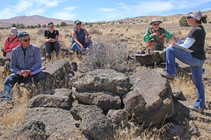
August 2-4: 2nd Annual Wild Horse Walkabout
Save the date! The public is invited to the Twin Peaks Herd Management Area near Susanville, CA. Attendees will spend the two nights out on the range to learn about how the BLM monitors rangeland and herd health from a BLM wild horse and burro specialist. Don't miss this unique opportunity to learn more about how BLM manages wild horses and burros. (BLM California Facebook)
|

Ongoing: Bring Home a Wild Horse or Burro
The BLM Wild Horse and Burro Program is excited to announce nearly 70 events this year as part of BLM's efforts to find good homes for our nation's wild horses and burros. Known for their intelligence, endurance and loyalty, wild horses and burros, with the right training, are outstanding for trail riding, packing, working and have successfully competed for awards in numerous fields from endurance riding to dressage. With more than 81,000 wild horses and burros on BLM-managed public lands, these wild icons of our American history need your help more than ever. Without any natural predators that can control population growth, wild horse and burro herds grow rapidly on the range and can quickly overcome the land's ability to support them. The BLM works to maintain healthy wild herds by gathering excess animals and placing them into good homes. (BLM website)
|
|
WILDLIFE QUESTION OF THE WEEK ANSWER
c) red dog
Bison calves tend to be born from late March through May and are orange-red in color, earning them the nickname “red dogs.” After a few months, their hair starts to change to dark brown and their characteristic shoulder hump and horns begin to grow. (15 Facts About Our National Mammal: The American Bison via DOI)
|
|
|
News.Bytes is a publication of the Bureau of Land Management in California.
Bureau of Land Management
California State Office
2800 Cottage Way, Suite W1623
Sacramento, CA 95825
(916) 978-4600
Send comments to the News.Bytes Team | Subscribe to News.Bytes | Unsubscribe
|
     
|
|
|